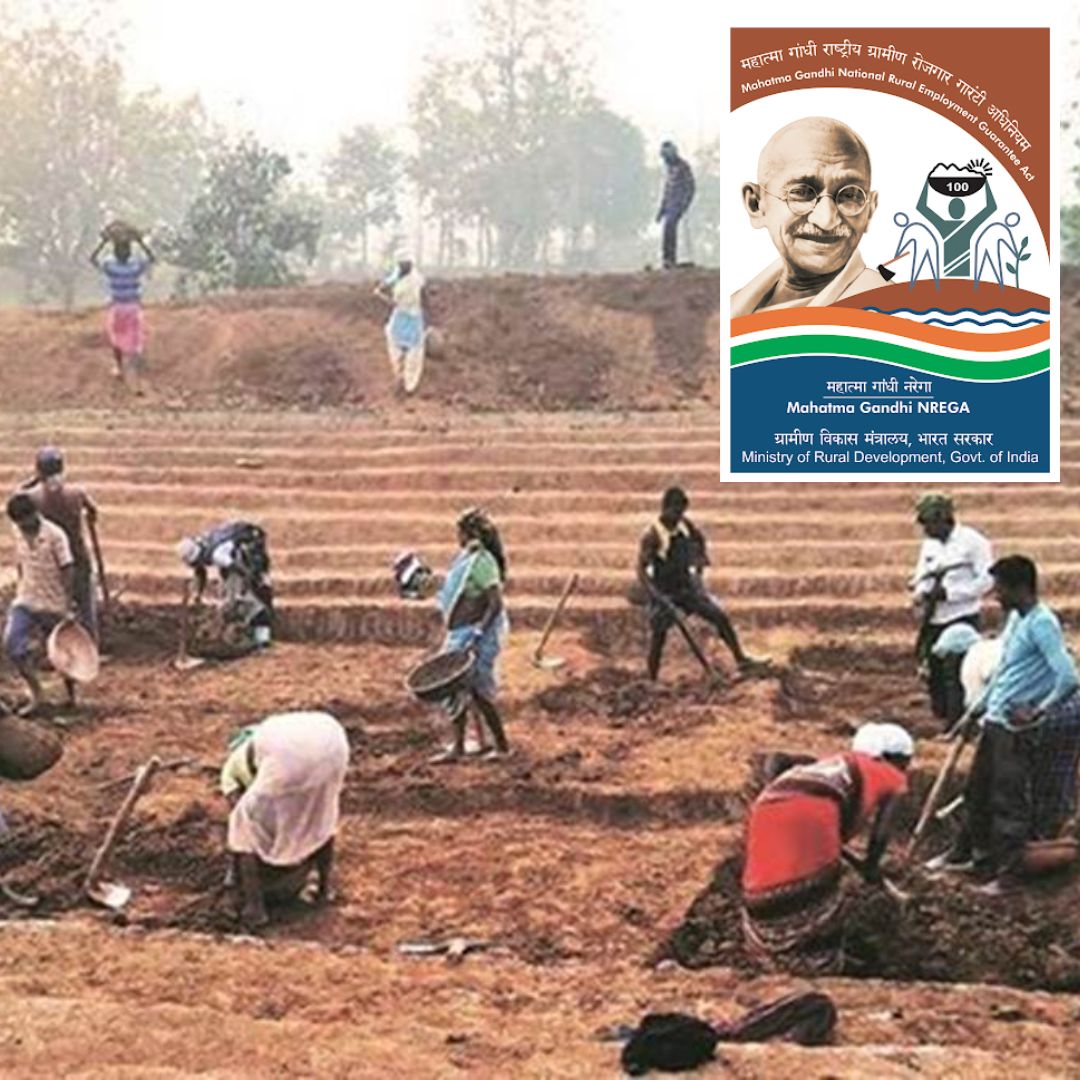
Image Credit- MGNREGA Blog Post, Digital India
This Day In 2005, MGNREGA Offering Means Of Livelihood To Millions Of Underprivileged Was Passed- Know More
Writer: Tanmay Channa
I am currently pursuing BSc.Economics from NMIMS University, Mumbai. I have a deep interest for research and journalism.
India, 23 Aug 2022 12:32 PM GMT
Editor : Shiva Chaudhary |
A post-graduate in Journalism and Mass Communication with relevant skills, specialising in content editing & writing. I believe in the precise dissemination of information based on facts to the public.
Creatives : Shiva Chaudhary
A post-graduate in Journalism and Mass Communication with relevant skills, specialising in content editing & writing. I believe in the precise dissemination of information based on facts to the public.
The government saw the MGNREGA as having the potential to boost rural residents' financial security and purchasing power, decrease distress migration, and develop rural areas' assets.
The Mahatma Gandhi National Rural Employment Guarantee Act (MGNREGA), which offers a means of livelihood to millions of poor people living in rural areas, was passed by the Lok Sabha on August 23, 2004.
The MGNREGA was first implemented in 200 of India's most disadvantaged districts. It was then implemented in stages, with 130 new districts added between 2007 and 2008, eventually reaching over 626 districts nationwide.
Fundamental Legal Right
For the millions of Indians who live in rural regions, the MGNREGA is a social security programme that recognises the right to employment as a fundamental legal right.
For adults willing to accept unskilled manual labour at a minimum pay of Rs 120 per day, this statute provides a legal guarantee for at least 100 days of paid employment every fiscal year. The government is still required to pay the workers their daily salary even if it fails to find jobs for people.
The MGNREGA was launched to give unskilled individuals in rural areas more purchasing power, regardless of whether they were considered below the poverty line. It has been noted that women make up about 30 per cent of the labour force in rural areas.
This law was initially known as the National Rural Employment Guarantee Act (NREGA), but on October 2, 2009, Mahatma Gandhi's birthday, the prefix was added.
Boosting Financial Security & Purchasing Power
The government saw the MGNREGA as having the potential to boost rural residents' financial security and purchasing power, decrease distress migration, and develop rural areas' assets.
Women and members of the Scheduled Castes and Scheduled Tribes make up most of the workforce in rural areas, and this Act further advanced gender equality and social upliftment.
The MGNREGA's primary goals were employment and rural development. Targeted rural development included pond construction, tree planting, afforestation, flood prevention, and water conservation.
MGNREGA 2.0
The MGNREGA was modified under the 12th Five Year Plan, and MGNREGA 2.0 was implemented, as per the information on Wikipedia.
The changes include strengthening the demand for work among rural workers, improving the labour budget, reducing delays in paying wages because a delay would necessitate the government to compensate the workers and strengthening the bank and post office network to ensure that workers are getting their wages.
Implementing an employment guarantee scheme requires the government to spend money, but in the long run, a programme like this reduces unemployment and the expenses associated with widespread poverty. The Lok Sabha passed the MGNREGA on August 23, 2004, and the Rajya Sabha on August 25, 2005, while on September 5, 2005, the President of India signed the legislation.
 All section
All section













